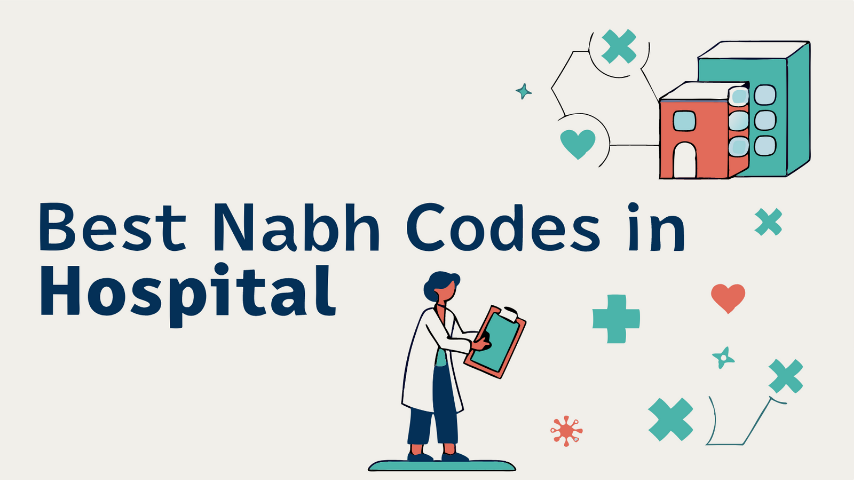In a medical emergency, “code” refers to a specific alert system that signals immediate assistance for critical patient situations. Different types of codes are announced in hospitals to mobilize the right teams quickly; for instance, “Code Blue” often indicates a cardiac arrest. Emergency codes in hospital NABH (National Accreditation Board for Hospitals & Healthcare Providers) guidelines standardize these codes to streamline rapid responses, improving patient safety and crisis management. Hospitals implement these codes to ensure that staff members understand the nature of the emergency, enabling prompt action in life-threatening events and enhancing coordinated care across departments.
The Importance of Emergency Codes in Healthcare Settings
Hospital emergency codes serve multiple critical purposes:
- Enable rapid response to emergencies
- Maintain calm in healthcare facilities
- Ensure clear communication among staff
- Standardize emergency protocols
- Facilitate organized emergency management
- Protect patient and staff safety
Common Hospital Emergency Codes and Their Meanings
Code Blue: Medical Emergency
The most widely recognized emergency code, Code Blue indicates:
- Cardiac arrest
- Respiratory failure
- Medical emergencies requiring immediate resuscitation
- Life-threatening situations
Response Protocol
- Immediate activation of the Code Blue team
- Rapid deployment of crash carts
- Clear communication of exact location
- Documentation of response times
- Implementation of life-saving interventions
Code Red: Fire Emergency
Indicates fire or smoke in the facility:
- Active fire
- Smoke detection
- Fire alarm activation
- Potential fire hazards
Response Protocol
- R – Rescue anyone in immediate danger
- A – Activate fire alarm
- C – Contain fire by closing doors
- E – Extinguish/Evacuate as appropriate
Code Black: Bomb Threat
Used for:
- Bomb threats
- Suspicious packages
- Security emergencies
- Potential explosive devices
Code Pink: Infant/Child Abduction
Activated when:
- Infant goes missing
- Child abduction is suspected
- Security breach in pediatric areas
Emergency Codes in Hospital NABH Guidelines
NABH accreditation requires hospitals to maintain specific emergency code protocols. These standardized codes ensure:
Core Requirements
- Clear documentation of all codes
- Regular staff training
- Periodic emergency drills
- Updated response protocols
- Equipment maintenance
NABH-Specific Code Categories
- Patient-related emergencies
- Facility-related emergencies
- Security-related emergencies
- Environmental emergencies
- Disaster management codes
Implementation of Emergency Codes
Staff Training Requirements
- Initial orientation
- Annual refresher courses
- Practical drills
- Documentation review
- Performance assessment
Equipment and Resources
Essential equipment includes:
- Code carts
- Emergency medications
- Communication devices
- Safety equipment
- Documentation tools
Best Practices for Emergency Code Management
Communication Protocols
- Clear announcement systems
- Backup communication methods
- Regular system testing
- Staff notification procedures
- External agency coordination
Documentation Requirements
- Incident reports
- Response times
- Actions taken
- Outcomes
- Follow-up measures
Modern Trends in Emergency Code Systems
Digital Integration
- Electronic alert systems
- Mobile notifications
- Digital documentation
- Real-time tracking
- Analytics and reporting
Enhanced Security Features
- Biometric access control
- Video surveillance
- Location tracking
- Electronic lockdown systems
- Automated reporting
Emergency Code Response Teams
Team Composition
- Primary responders
- Secondary support
- Specialty teams
- Administrative support
- Security personnel
Role Assignments
- Team leader
- Primary care provider
- Medication administrator
- Documentation specialist
- Equipment manager
Impact of Emergency Codes on Patient Care
Benefits
- Rapid response times
- Organized interventions
- Clear communication
- Efficient resource utilization
- Better outcomes
Quality Metrics
- Response times
- Success rates
- Staff compliance
- Patient outcomes
- Documentation accuracy
Q1: What is the most common emergency code in hospitals?
Code Blue is the most frequently used emergency code, indicating a medical emergency requiring immediate resuscitation efforts.
Q2: Are emergency codes standardized across all hospitals?
While many codes are similar, there can be variations between facilities and regions. NABH-accredited hospitals follow standardized protocols for emergency codes.
Q3: How often should hospital staff undergo emergency code training?
Staff typically require initial training upon hiring and annual refresher courses, with additional practical drills throughout the year.
Q4: What role do emergency codes play in hospital accreditation?
Emergency codes and their proper implementation are crucial components of hospital accreditation, including NABH certification.
Q5: How are emergency codes different from disaster codes?
Emergency codes typically address specific incidents within the facility, while disaster codes handle larger-scale events affecting multiple areas or systems.
Conclusion
Emergency codes in hospitals, particularly those aligned with NABH standards, form the backbone of efficient emergency response systems. These standardized protocols ensure quick, organized responses to various emergencies while maintaining calm in healthcare facilities. Regular training, proper documentation, and continuous improvement of these systems are essential for maintaining high standards of patient care and safety.
The evolution of emergency code systems continues with technological advancement, but their fundamental purpose remains unchanged: to provide clear, efficient communication during critical situations. Healthcare facilities must stay current with best practices and regulations while ensuring their staff is well-trained and prepared to respond to any emergency situation.
For healthcare workers and administrators, understanding and properly implementing emergency codes is not just a regulatory requirement—it’s a crucial component of providing safe, effective patient care. Regular review and updates of these systems, combined with proper training and documentation, help ensure that hospitals can respond effectively to any emergency situation while maintaining the highest standards of patient care and safety.





